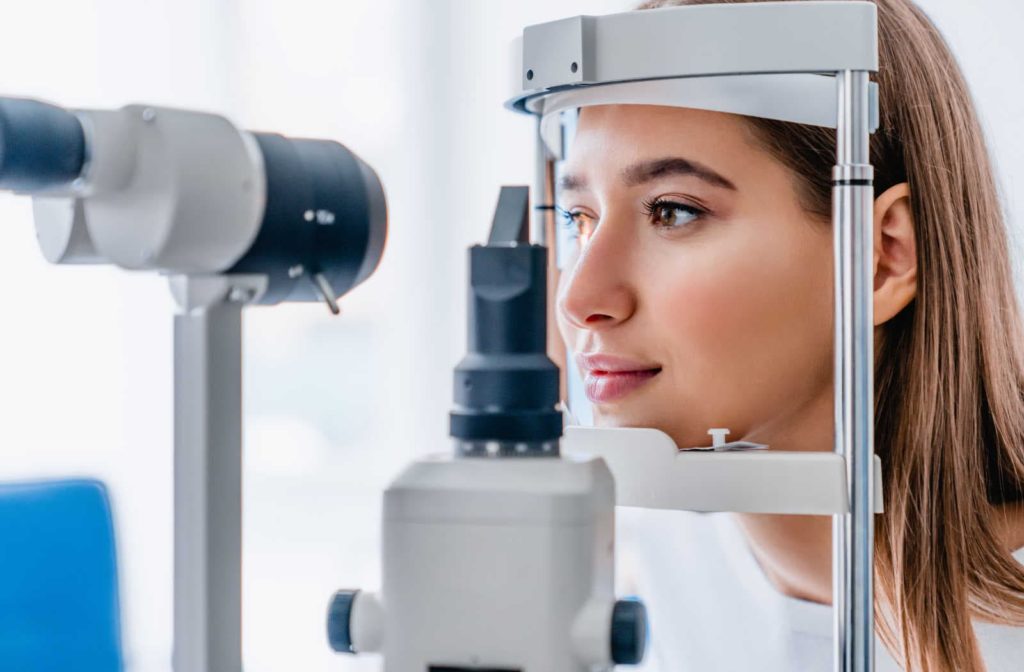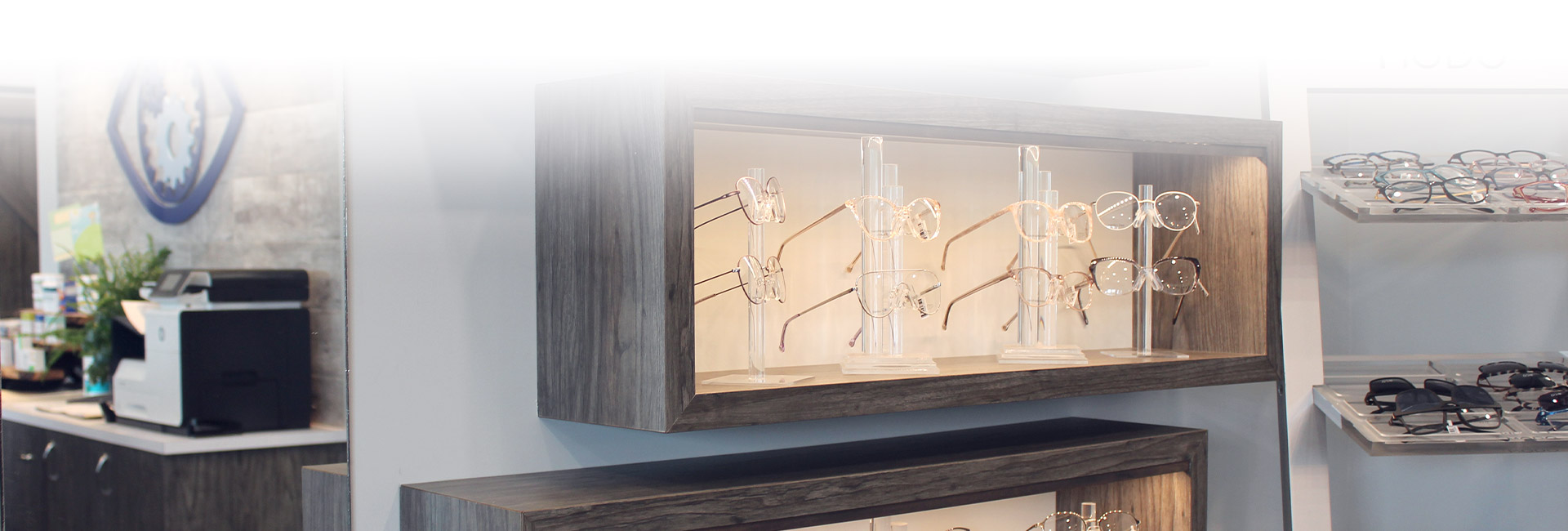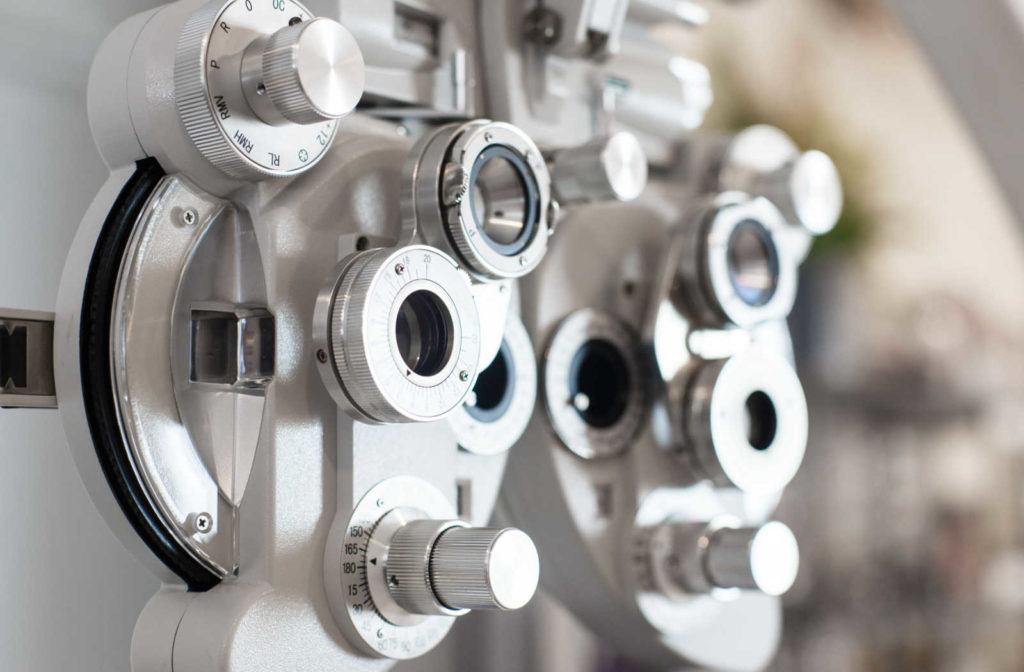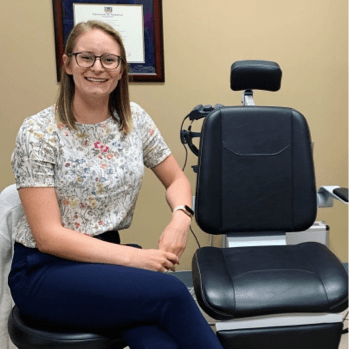Despite using them daily, it can be easy to forget to take care of our eyes. We know to protect them from sharp objects and wear sunglasses, but there’s so much more inside our eyes that we may not think about until something goes wrong.
That’s why you should get a regular eye exam rather than wait for eye diseases or conditions to develop. Your optometrist can see the parts of your eye you can’t and help you maintain good eye and vision health.
How long an eye exam takes depends on your needs, but a comprehensive exam can often be completed in less than an hour. A routine exam takes 30 minutes, however it may take up to an hour if you require additional testing.
An hour every year or 2 is worth dedicating to your eye health.
Eye Exam Frequency
The first factor in how often you should have an eye exam is age. When we’re young, our eyes develop and change rapidly. For example, myopia is a common condition affecting eyesight that typically develops during these formative years.
Once we pass 40, we may also see age-related conditions affect our vision, such as presbyopia or age-related macular degeneration.
The Canadian Association of Optometry recommends the following schedule for eye exams:
- Infants: first exam between 6–9 months
- 2–5 years: at least 1 exam before starting school
- 6–19 years: 1 exam annually
- 20–64 years: 1 exam every 2–3 years
- 40–64 years: 1 exam every 2 years
- 65+ years: 1 exam annually
While these guidelines will help most people keep a regular watch on their vision, some medical conditions or lifestyle choices could put you at higher risk for eye issues, such as diabetes or smoking. Your eye doctor may recommend a different eye exam schedule based on your needs.

What Happens at an Eye Exam?
The length of time a comprehensive eye exam takes depends on your eye care needs. It involves a range of tests, including a review of your vision and medical history, and it can be tailored to your unique eye health needs.
Preliminary Vision Tests
Your optometrist might begin with a series of tests assessing specific aspects of your visual functions. These can include:
- Colour vision: A colour vision test uses a series of coloured images with numbers or designs. A person with normal colour vision can see the figures on the images, while someone with colour deficiency won’t.
- Binocular Vision Screening: A binocular vision test assesses your eyes’ ability to work together. When your eyes function properly together, you experience good depth perception, eye coordination, and visual focusing ability.
- Peripheral vision: A visual field test, or a perimetry test, can assess your peripheral vision. During this test, you may be shown a series of lights or images that appear in different areas of your vision.
Visual Acuity
Visual acuity is a measurement of how clearly each of your eyes can see. You’ve likely seen images of this test before, as it’s one of the more recognizable tests from an eye exam. Your optometrist will ask you to read letters off a chart at a set distance. This is how your optometrist determines if you have 20/20 vision.
Overall Eye Health
Some vision diseases develop in your eye’s structure before they begin to affect your sight. Your optometrist can use various tools and technology to see the parts of your eye you can’t, noticing early signs of these conditions.
Testing for Glaucoma
As you get older, risk of glaucoma may become more of a concern. A person is more likely to develop glaucoma if it runs in their family. A visual field test is one way to detect early signs. An OCT scan and optic nerve assessment are also important tools in diagnosing early glaucoma. An eye pressure test (tonometry) is performed on every patient as high eye pressures can be an indication of glaucoma.
Keratometry
Keratometry measures the curvature of your cornea, the clear dome at the front of your eye. A keratometer can measure corneal astigmatism and detect imperfections on the surface.
Refraction Tests
Diagnosing how your eye refracts light requires a combination of measurements and subjective questions. When you think of an eye exam, the phoropter may be the first thing that comes to mind—it’s the large device your optometrist places in front of your face, switching through different lenses while you read from the eye chart.
This test determines your prescription for eyeglasses.
Eye Care Designed for You
An eye exam should leave you confident in your vision. Beyond 20/20 Optometry offers a hassle-free and comfortable experience every time you come in for a checkup.
Don’t put off your vision health. Book your next eye exam with us and have one less thing to worry about.




